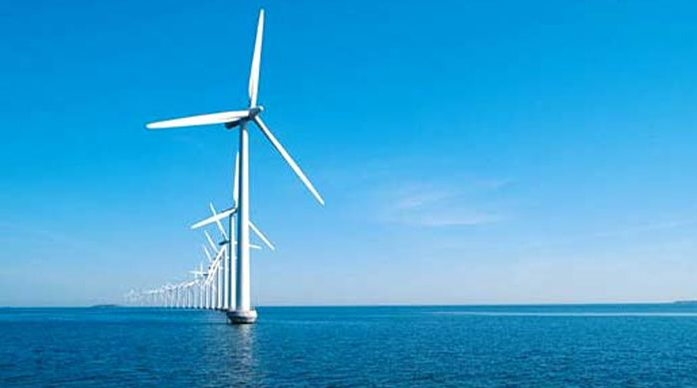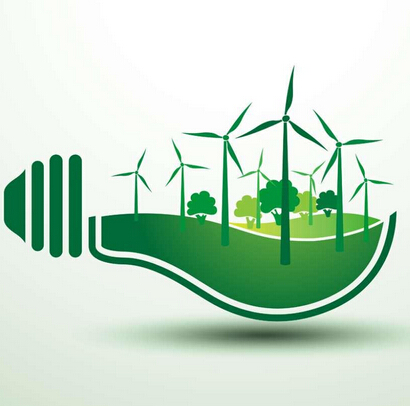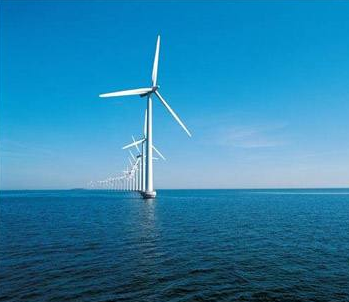China has the natural advantages of developing offshore wind power
Although offshore wind power started late, but with the stability of sea breeze resources and the characteristics of large power generation, in recent years is the rapid development around the world. The latest data show that wind power generation is second only to hydroelectric power generation accounts for 16% of global renewable resource power generation.
According to the Global Wind Energy Council (GWEC) statistics, 2016 global offshore wind power installed capacity of 2.199 million kilowatts, the world's 14 markets, offshore wind power installed capacity of 14.384 million kilowatts. Britain is the world's largest offshore wind power market, installed capacity accounted for nearly 36% of the world, followed by Germany accounted for 29%. In 2016, China's offshore wind power installed capacity accounted for 11% of the global installed capacity, replacing Denmark, ranking third.
China has the natural advantages of the development of offshore wind power, the coastline of up to 18,000 km, the use of sea area of more than 300 million square kilometers, rich in wind energy at sea. According to the preliminary results of the China Meteorological Administration's wind energy resources, China's 5 to 25 meters water depth line within the coastal area, sea level above 50 meters, wind power installed capacity of about 200 million kwh. It can be seen that offshore wind power is the future direction of China's power generation industry.
In fact, in 2016, China's land-based wind power installed capacity has dropped slightly, while the offshore wind power installed capacity to achieve substantial growth. According to the China Wind Energy Association statistics, in 2016, China's offshore wind power installed capacity (hanging capacity) 154 units, capacity of 590,000 kilowatts, up 64% over the previous year, the cumulative installed capacity of 1.63 million kilowatts, ranked in the global offshore wind power installed Third place.
China's land wind power is mainly located in the northwest of China, the local consumption capacity is limited, external transport depends on the status of UHV transmission line construction. Offshore wind power can be developed mainly in the eastern coastal areas of China, to develop offshore wind power, not only to meet the needs of the eastern electricity, land and sea wind combined, but also accelerate the pace of China's green power generation.

It is understood that by 2020 China will build offshore wind power 15 million kilowatts (including built 5 million kilowatts, under construction 10 million kilowatts). On this basis, the state also clear the offshore wind farm 0.85 yuan / kWh and intertidal wind farm 0.75 yuan / kWh electricity price policy. At the same time, a number of offshore wind power demonstration projects have been completed, equipment and technology continues to improve.
China's offshore wind power can be a huge amount of resources, closer to the eastern power load center, compared to land wind power has an irreplaceable advantage. But the offshore wind power technology is not mature, high construction costs, operation and maintenance difficulties and other factors, but also makes China's offshore wind power development failed to achieve the desired. The next step, must be long to advance its development.
First of all, combined with the upstream and downstream industry chain resources, the development of key technology research. Establish the offshore wind power industry alliance, promote the "industrial chain" vertical links and horizontal entities jointly carry out the key technical research of offshore wind power, and truly enhance the competitiveness of China's offshore wind power industry, and promote the healthy and sustainable development of offshore wind power industry.
Second, to maintain a stable industry policy, to promote the cost of offshore wind power continued to decline. The successful experience of European countries shows that the development of renewable energy, especially the development of offshore wind power, requires strong government support. The fixed tariff system is especially applicable to the early stage of offshore wind power development. After the development cost is gradually reduced, it will be changed to fixed price / Fixed subsidies, bidding and other policies, continue to promote the development of offshore wind power process.
Again, to build other energy around the renewable energy power generation scheduling mechanism, to achieve the priority of renewable energy. Learn from the successful experience of Germany and other European countries, on the one hand a reasonable government subsidies to encourage renewable energy to participate in market competition, to ensure their own priority online; the other hand, the design of a reasonable market trading mechanism, the natural formation of other power around the renewable energy Real-time transactions and the provision of ancillary services to the market mechanism, the maximum reduction of abandoned water, abandoned the wind, abandoned light.
















 RCCN WeChat QrCode
RCCN WeChat QrCode Mobile WebSite
Mobile WebSite







